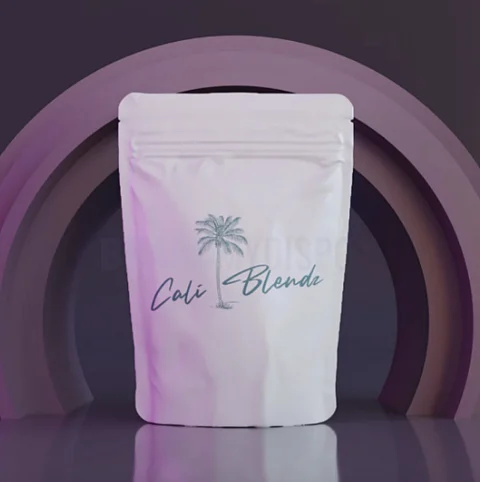

Custom Mylar bags are widely favored for packaging, in sectors because of their strength, ability to block out elements and customizable design options. Nevertheless producing these personalized pouches requires printing techniques to achieve top notch outcomes. This article delves into the primary printer varieties employed in crafting custom Mylar pouches; digital printers, flexographic printers and rotogravure printers. Grasping the advantages and uses of each type can assist you in selecting the suitable approach, for your packaging requirements.
Printed Mylar bags are made from a type of polyester film known for its high tensile strength, chemical stability, and excellent barrier properties against moisture, oxygen, and light. These attributes make customized Mylar bags ideal for preserving the freshness and quality of various products.
Durability: Resistant to punctures, tears, and abrasion.
Barrier Properties: Excellent protection against moisture, oxygen, and light.
Customizability: Can be printed with vibrant colors and detailed designs.
Versatility: Suitable for a wide range of products.
Digital custom mylar bag printers are known for their ability to produce high-quality prints quickly and efficiently. They use digital files to print directly onto the substrate, making them highly flexible and suitable for short runs and custom mylar bag designs.
High-Quality Prints: Digital mylar bag printers offer sharp, vibrant images with precise color matching.
Quick Setup and Turnaround: Minimal setup time is required, making digital printing ideal for short runs and fast turnarounds.
Cost-Effective for Small Batches: No need for printing plates, which reduces costs for small quantities.
Versatility: Can print on various substrates, including Mylar, with ease.
Short Runs: Ideal for limited-edition packaging, prototypes, and personalized designs.
Complex Designs: Perfect for intricate graphics and multi-color designs.
Flexographic printing, or flexo printing, is a popular method for high-volume packaging production. It uses flexible relief plates to transfer ink onto the substrate, making it efficient for large runs of printed mylar bags.
Efficiency: Flexographic printers can handle high-speed production, making them suitable for large quantities.
Cost-Effective for Large Runs: While initial setup costs are higher, the cost per unit decreases significantly with volume.
Versatility in Inks and Substrates: Flexo printing supports a wide range of inks and can print on various materials, including Mylar.
Large Runs: Best for large-scale production where economies of scale reduce costs.
Simple to Moderate Designs: Efficient for straightforward designs and fewer color changes.
Rotogravure mylar bag printing, often referred to as gravure printing, is known for producing high-quality, detailed prints. This method uses engraved cylinders to transfer ink onto the substrate, allowing for consistent and high-resolution images.
Superior Print Quality: Rotogravure printers deliver exceptional detail and color consistency, making them ideal for intricate designs.
Durability: The engraved cylinders are long-lasting, making them cost-effective for long runs.
Speed: Capable of high-speed custom mylar bag printing, suitable for large volumes.
High-Quality, Long Runs: Best for products that require high-definition graphics and large production quantities.
Complex Designs: Ideal for detailed artwork and multi-color prints.
When selecting the appropriate printer for your custom Mylar bags, consider the following factors:
Small to Medium Runs: Digital mylar printing is cost-effective and offers quick turnaround times.
Large Runs: Flexographic and rotogravure printing are more suitable for high-volume production due to their efficiency and lower cost per unit.
Simple Designs: Flexographic custom mylar bag printing handles straightforward designs efficiently.
Intricate Designs: Digital and rotogravure printing excel at producing detailed and multi-color designs.
Limited Budget: Digital mylar bag printing reduces setup costs and is ideal for small batches.
Higher Initial Investment: Flexographic and rotogravure printing have higher setup costs but become cost-effective with larger production runs.
Quick Turnaround: Digital mylar printing offers the fastest setup and production times, ideal for tight deadlines.
Longer Lead Times: Flexographic and rotogravure custom mylar bag printing may require more time for setup and production but are efficient for ongoing, large-scale orders.
The choice of printer for custom Mylar bags depends on your specific needs, including production volume, design complexity, budget, and turnaround time. Digital custom mylar bag printers are perfect for short runs and intricate designs, offering flexibility and high-quality results. Flexographic mylar bag printers are best for large runs with simple to moderate designs, providing efficiency and cost-effectiveness. Rotogravure printers deliver superior print quality and are ideal for high-volume, detailed graphics.
By understanding the strengths and applications of digital, flexographic, and rotogravure printers, you can make an informed decision that ensures your customized Mylar bags are produced to the highest standards, reflecting your brand’s identity and meeting your packaging requirements.
